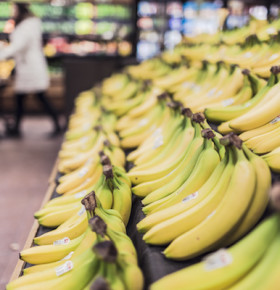
Management consulting firm, McKinsey & Company, predicts that close to 75% of the worldwide population will have access to mobile and Internet technology by 2030. Harvard Business Review suggests that keeping things simple is the key to building strong customer relationships so that they are compelled to choose your products in both the short and long term. Imagine the possibilities in event marketing!
While the experts come up with theories and statistics, businesses are tasked with a juggling act that involves anticipating the market, keeping up with technology-related changes in consumer behavior, and maintaining an authentic value proposition that is in line with their mission. I want to share a few cool tools for companies to consider when looking for the balance between traditional and innovative consumer touch-points.
In-store and mobile sampling
Sometimes consumers are hesitant to try something new. Either they have a preconceived notion that they will not like a product or that it somehow will not meet their standards. We’ve all been burned by getting sucked into cool packaging or great online reviews, and then been sorely disappointed once we pull the trigger and buy a product. For me, it’s gluten-free bread. All of the brands I’ve tried have been dry or tasteless. So now, a company is going to be hard-pressed to get me to toss another $6.99 down the drain (or toss the bread into the black hole of the freezer, where I put things that I will hopefully try again).
Sampling is a fantastic way to bridge the gap between “No way!” and turning someone onto your product. We’ve seen this happen time and again with clients. Integrating a sampling program into a mobile tour that is geared specifically toward your target market and increases engagement can be an especially effective differentiator.
In-store announcements
We’ve all been in stores and heard “Attention shoppers!” followed by an intercom message in which a store associate or manager announces a special promotion. “Buy six and get two free!” The free item is often distributed with a voucher system whereby someone will be standing at an advertising kiosk where customers can redeem their voucher.
Some find it annoying or slightly amusing. I personally love it, partially because it makes me feel special, like I came in at just the right time to get in on this bargain, and partly because it reminds me of when Kmart used to have their blue light specials. Either way, it’s a tried and true event marketing method of connecting with consumers and positively influencing in-store buying decisions.
inMarket iBeacons
iBeacons is an Apple product that is loaded onto all devices that are iOS 7-enabled. This technology allows iOS apps to receive location-aware notifications. It uses Bluetooth low energy (BLE) signals that can be transmitted from “beacons” set up in stores. Since the users have decided to download the app, they’ve already indicated that they want to make the connection and will receive relevant ‘push’ content. The primary goal is to reach shoppers who are walking in or right near a store in order to maximize the effectiveness of messaging. When iBeacons are installed at the entrance to stores, the location is nailed down to a few feet. Among grocery stores, they have already been installed in Safeway and Giant in Seattle, San Francisco, and Cleveland. If a shopper is using its “listbliss” app (shopping list), a notification pops up on their phone, telling them the item is on sale. Or the Checkpoints app could tell them which items will earn them the most reward points.
